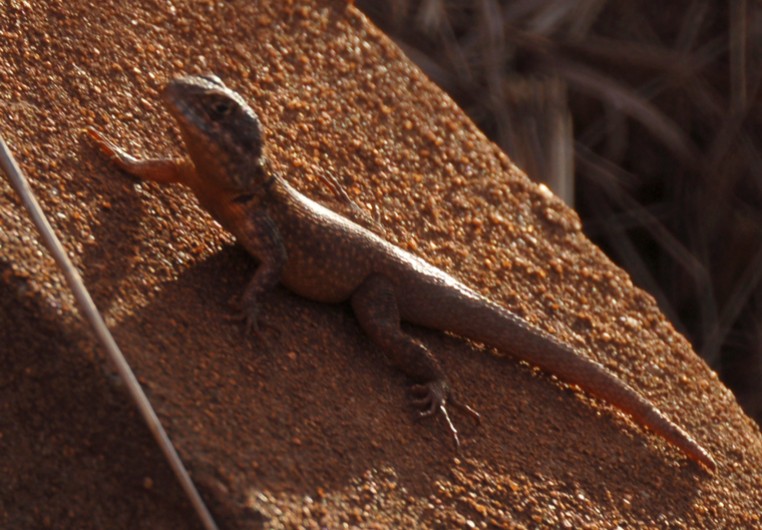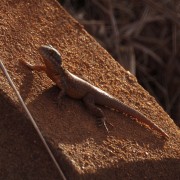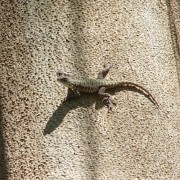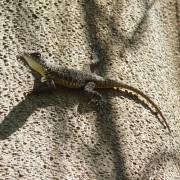Biodiversity
< Back

 Itamberes Lizard
Tropidurus itambere | Rodrigues, 1987
Itamberes Lizard
Tropidurus itambere | Rodrigues, 1987

PHOTO: Property of Native / Embrapa
Characterization: This lizard measures 25-100mm from its snout to the beginning of its tail. Adult males are longer than females. It has a robust, flat body; long limbs and short tail. Its back is dark brown with many dark and light spots. Its neck has a black transverse stripe lined posteriorly by a light-colored stripe. Its belly is grayish and its neck is dark.
Habitat: This species of lizard lives in undisturbed savanna areas, especially those with plenty of rocks. On the ground it may be seen on rocks, termite mounds, and fallen logs.
Distribution: It occurs only in Brazil, in the states of Minas Gerais, São Paulo, Goiás, Mato Grosso, Mato Grosso do Sul, and Tocantins.
Habits: It is an active, diurnal species in the hottest hours of the day during the cold months, more in the early morning and late afternoon during the warmer months. It is territorial and spends most of its time stop at a high point of its territory from where it can locate prey and from where it moves quickly to capture them. When seen, it stands still trying to camouflage itself or hide in holes or rock crevices.
Diet: This species' diet consists primarily of parts of plant and arthropods, among which ants, beetles, crickets, grasshoppers, insect larvae, termites, and barnacles stand out.
Breeding: This takes place almost entirely during the rainy season. Each female can lay more than one brood during the year, ranging from 1 to 8 elliptical eggs; hatchlings are born measuring approximately 25mm in length and reach sexual maturity when measuring close to 55 mm, in their first year of life.
UFRA: This species is found primarily in Restored Native Forests, especially in areas with rocks or concrete dam walls.






